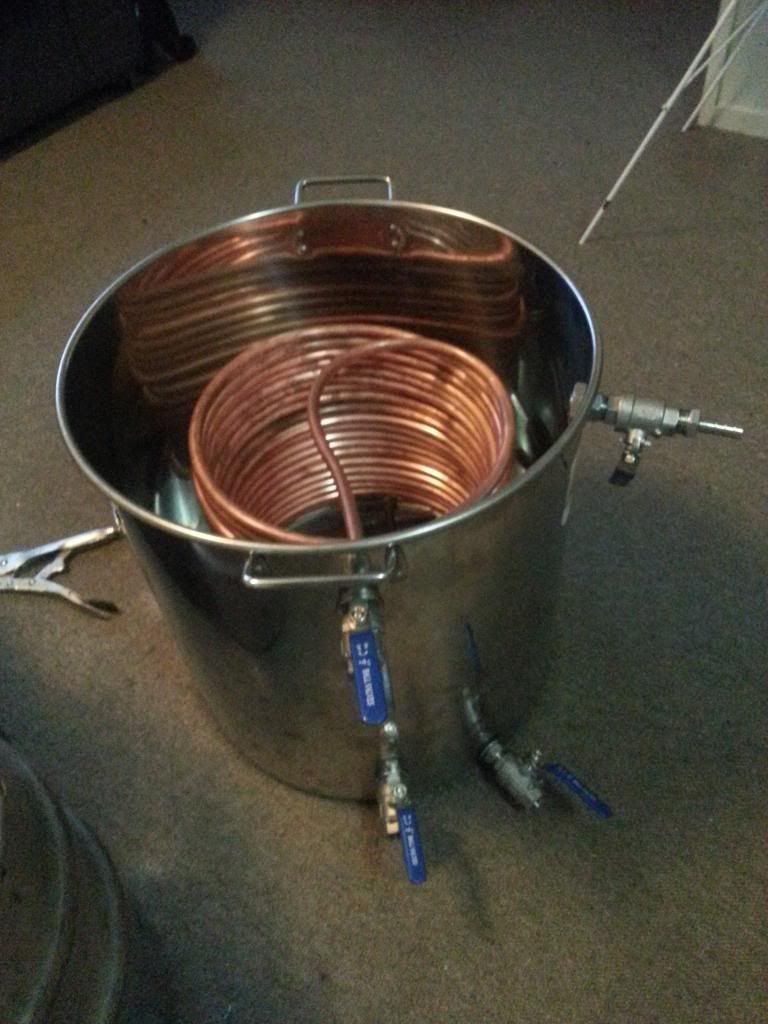Got my Herms hx made, a coil within a coil. Made the inner one first, around a saucepan from upstairs, then a larger saucepan for the next. It was a bit of a rats nest, so 3x 200mm M8 threaded rod and some copper wire, and is strapped n place so there's a 12 mm cap between each coil, and the inner coils line up with a space on the outer coil.
Got 9m of tube into it, 200mm high, outside diameter 240mm, my hx pot is 260mm id so should be in business.
Before coiling I filled the 10m of tube with salt, which was a nightmare, had the coil unwound into a spiral with me out of an upstairs window with a funnel and jug of salt. If anyone tries the salt filling to prevent collapsingof the tube i'd recommend youmdo it on a dry day! Hopefully the salt will wash out ok!


Got 9m of tube into it, 200mm high, outside diameter 240mm, my hx pot is 260mm id so should be in business.
Before coiling I filled the 10m of tube with salt, which was a nightmare, had the coil unwound into a spiral with me out of an upstairs window with a funnel and jug of salt. If anyone tries the salt filling to prevent collapsingof the tube i'd recommend youmdo it on a dry day! Hopefully the salt will wash out ok!







